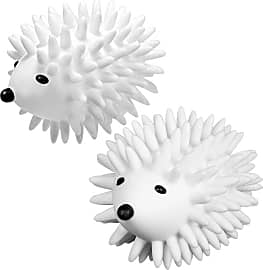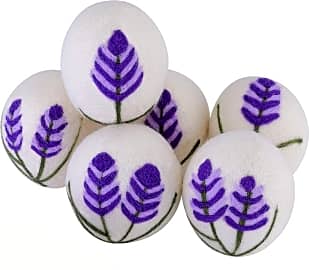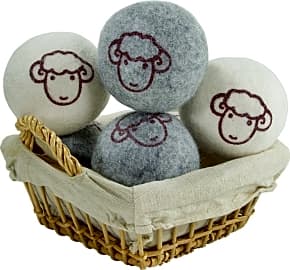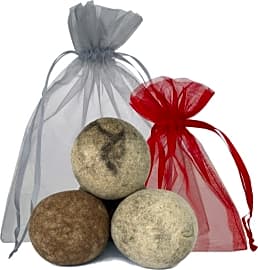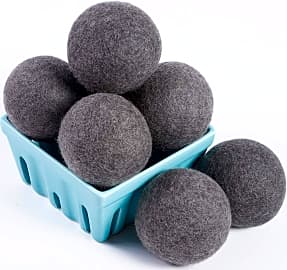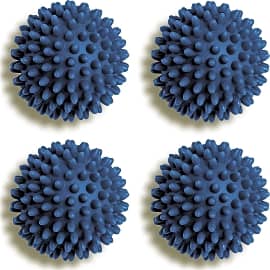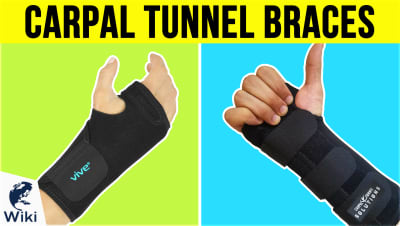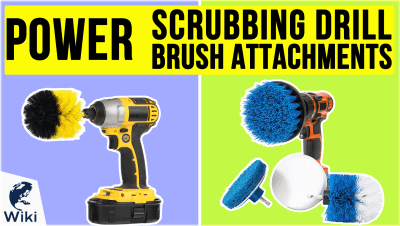The 10 Best Dryer Balls

This wiki has been updated 35 times since it was first published in February of 2017. Anyone who's dealt with tumble-dried laundry knows all too well the battle to separate items bound tightly together by static cling, not to mention the frustration of finding damp spots in the middle of wadded-up bundles of bedding. Add a set of these dryer balls to the drum along with each load to minimize those unseemly entanglements and keep wet socks from hiding out among the sheets. When users buy our independently chosen editorial recommendations, we may earn commissions to help fund the Wiki.
Editor's Notes
February 11, 2021:
We removed a few selections due to quality issues, mainly regarding complaints that the balls began to unravel after a few loads of laundry. When replacing these with new items, we wanted to focus on variety. There are plenty of plain wool balls on the market, and a lot of them are virtually the same, so we looked for high-quality options that offer either aesthetic or functional differences that make them stand out.
New to the list, the Smart Design Hedgehog is a cute choice that's sure to put a smile on your face, making laundry a little less of a chore. Plastic options like these are good for those avoiding animal products as well as those who are worried about fibers shedding onto their clothes (though this shouldn't be a major issue with well-constructed wool models). If the odd hair does break loose, the darker color of the CoolCloudS Grey ensures that this won't be a huge issue on black clothes.
Many people switching over from scented dryer sheets may want to continue to add fragrance to their laundry. This is easily accomplished by adding a few drops of essential oils to wool balls. The Lambid Lavender are not scented, but their handmade design will complement added lavender oil nicely.
We also added the Sunset Glory Ranch Alpaca in this update. Though they're pricier than other choices, they might be worth it for alpaca enthusiasts, those looking to avoid lanolin, or those who like to buy items made in the USA.
January 04, 2019:
Although wool and plastic dryer balls operate on the same basic principles, one or the other type may be preferred, depending on individual priorities. Some plastic types have room to hold a dryer sheet so it doesn't get lost in the load. For households with small children and babies in cloth diapers, woolen balls can be infused with essential oils to freshen and fluff laundry without reducing absorbency or introducing chemical irritants to the fabrics.
A Brief History Of Tumble Drying
Moore's adaptations made tumble drying practical and affordable enough to enjoy widespread popularity.
The process of removing moisture from wet laundry has remained relatively unchanged and fairly universal throughout human history, involving a great deal of physical effort or the employment of some sort of mechanism to wring it out as much water as possible before hanging the pieces up somewhere to air-dry. The time required to complete the second step depended upon the thoroughness of the first, along with a number of other factors, such as ambient temperature, humidity and ventilation.
Tumble dryers hasten the drying process by introducing additional heat and airflow to the mix. Early models were manually operated, and the outcome was far from ideal. An 18th-century design by M. Pochon had each load wrung out by hand before being placed in a perforated metal cylinder that had to be turned over an open fire by hand. What didn’t get singed would surely have had a decidedly smoky aroma, which is to say nothing of the repetitive-motion injuries the operator must have endured.
Nearly 100 years later, American inventor George Sampson adapted Pochon’s design by mounting the drum in a rack connected to a stove that served as the primary heat source, an improvement that was not only more efficient and less labor-intensive, but undoubtedly much safer. Unfortunately, the prohibitive cost meant that few could afford the luxury until another inventor, J. Ross Moore, came up with a version alternatively powered by electricity or natural gas. Moore's adaptations made tumble drying practical and affordable enough to enjoy widespread popularity. Further improved by innovations such as temperature controls, timers, and moisture-sensing technology, the modern clothes-dryer joined the ranks of other labor-saving devices associated with the midcentury rise of the American middle class. Owning one became as much a mark of achievement as an everyday convenience in the USA, although it remains less broadly appreciated in other parts of the world.
Redefining Convenience: Of Textiles, Chemistry, And Sprinting
The advent of tumble drying was virtually synchronous with the development of dryer sheets, although the latter actually arose not from the drying process itself, but from an inconvenience associated with washing machines of the time. Although these modern marvels had been a boon in terms of releasing their owners from the tyranny of scrubbing dirty laundry by hand across a washboard, they’d done nothing to improve the texture of many fabrics, some of which were so stiff, they could actually stand up by themselves.
Gaiser patented and sold the rights for his “Tumble Puffs” to Procter & Gamble.
Liquid fabric softener works by coating fabrics in a cationic chemical mixture that smooths out their rough surfaces and penetrates the fibers to make them more pliable. Combining it with detergents — which are generally anionic — would produce a precipitate, which would hardly contribute to the look and feel of cleanliness. The upshot is that fabric softener must be added during the rinse cycle, a task made even more odious in machine-washing's early days, when it frequently required a mad dash from a distant room or different floor to get the timing right.
It was just such a series of frantic scrambles that inspired inventor Conrad J. Gaiser, an experienced soap and detergent maker, to put a dollop of liquid fabric softener onto a scrap of cotton flannel to be tossed into the dryer, thereby sparing his wife several trips up and down the stairs of their multilevel duplex on laundry day. Gaiser patented and sold the rights for his “Tumble Puffs” to Procter & Gamble. Now produced by a number of different manufacturers in several variations on the original formulation, dryer sheets have become almost as ubiquitous as the appliances themselves — all with the shared goal of reducing stiffness, coarseness, and static cling, as well as imparting a fresh-smelling aroma to the works.
Anything They Can Do, We Can Do Better
Almost from its inception, the concept of better living through chemistry — popularized by a DuPont marketing slogan in the interwar era — has had its share of detractors. So it’s no surprise that dryer sheets impregnated with various softening agents are often stigmatized in terms of the potentially damaging effects of these chemical compositions on the environment and human health. Add to that the ongoing debates about the energy consumption of tumble dryers, as well as the costs of using disposable products, and there’s no shortage of material for proponents of any alternative to draw on.
The debate rages on, but ultimately, whether dryer balls work or not comes down to expectations.
Although their origin story isn’t nearly as clear-cut as that of fabric-softener sheets, dryer balls emerged as one such alternative around the end of the millennium. They come in two distinct forms: the nubby plastic fabrications normally sold in pairs, and the old-school artisanal versions made from felted wool. And while the differences between them are fairly self-evident, the disparities are often ignored by critics on all sides. Credited with doing everything from lowering utility bills and saving the environment to avoiding the deleterious effects of purportedly toxic ingredients in conventional dryer sheets, dryer balls' usefulness is often based on statements for which empirical evidence is sorely lacking.
The debate rages on, but ultimately, whether dryer balls work or not comes down to expectations. If you buy into the more sensational claims of dramatic improvements in energy efficiency or drying time, you’re likely bound for disappointment. And if you’re in the market for a cheaper way to reduce static cling, you probably shouldn’t hold your breath. On the other hand, if you’re hoping to avoid having to disentangle a giant wad of bedding that’s only dry on the outside when the sensor kicks off the machine, you may find the addition of a set of dryer balls more than sufficient to fluff and separate the contents of each load. By the same token, if you’re leery of dryer sheets’ environmental footprint, are ethically or financially inclined toward reusables over disposables, or just prefer the aromatic properties of your favorite essential oils to other fragrances, you’ll almost certainly be happy to ignore the racket of those dryer balls bouncing around inside the drum on laundry day.




